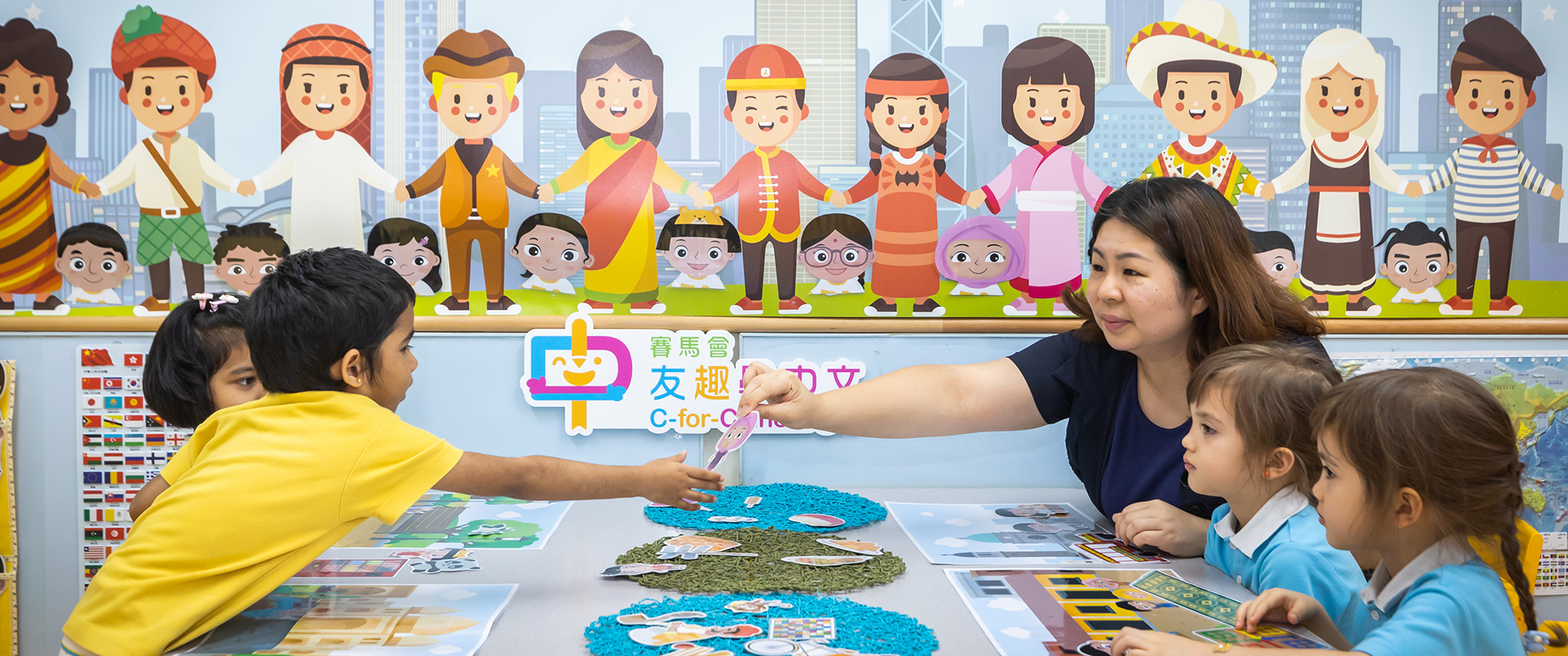C-for-Chinese@JC

Cultural Responsiveness
Cultural Responsiveness refers to the practices aiming to enhance people's competency in adapting to different cultures to embrace cultural diversity. Placing on equity, acceptance, and inclusion, cultural responsiveness has been promoted in education as the underlying principle in learning and teaching and supporting services to culturally and linguistically diverse learners.
Culturally Responsive Education Benchmarks
The "Culturally Responsive Education Benchmarks" (CREBM) is a systematic evidence-based framework that integrates cultural responsiveness with a "Home-School-Community" collaborative model for fostering ethnic minority children's competency in Chinese and social-emotional learning. The benchmarks are to promote CRE from policy to practice in local kindergartens.
In line with EDB's Performance Indicators for Kindergartens1, the benchmarks serve as a tool for schools to conduct self-reflection and self-evaluation while incorporating CRE into school development, teacher professionalism, learning and teaching, and the home-school-community partnership.
Guiding Principles of CREBM
1. Management and organisation
(a) Developing school policies to promote children's learning through a whole school approach, and
(b) Using culturally responsive leadership strategies to appreciate and respect cultural diversity and individual differences.
2. School culture
(a) Building a positive culture,
(b) Promoting children's Chinese language and social-emotional learning, and
(c) Fostering positive relationships among children, teachers, and between children and teachers.
3. Learning and teaching of Chinese language
(a) Developing a culturally responsive school-based curriculum with culturally responsive pedagogy,
(b) Supporting child-centred learning,
(c) Setting high expectations for all children, and
(d) Promoting interdisciplinary collaboration among teachers and teaching assistants like Multicultural Teaching Assistants (MTAs).
4. Learning and teaching of social-emotional skills
Promoting children's social-emotional learning such as self-management and expression of feelings, self-image, social skills, and sense of responsibility and social morality.
5. Student support
Providing support for ethnic minority children in learning Chinese, children with social-emotional needs, and children transitioning from kindergarten to primary school.
6. Parent engagement
Providing support and services to ethnic minority parents.
7. Teacher professionalism
Offering ongoing professional learning to teachers.
Note:
1 Education Bureau (2017). Performance indicators (kindergartens). HKSAR Government.